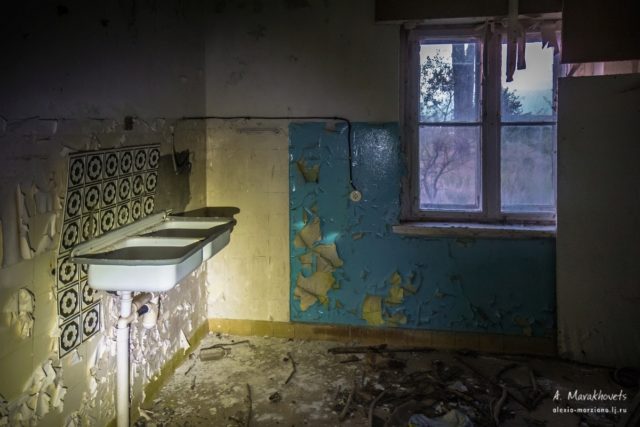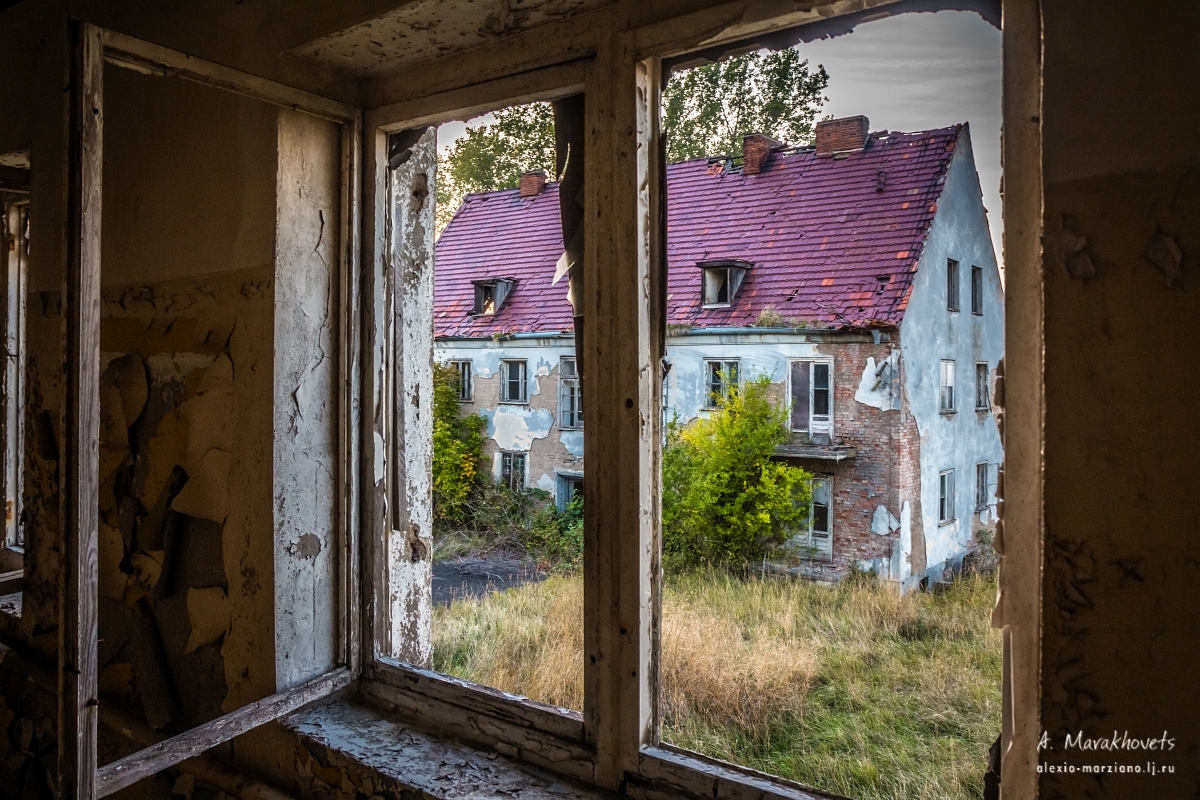The German peninsula of Wustrow is located in the Gulf of Mecklenburg southwest of Rerik. Rerik is a typical resort town with 2,000 inhabitants. During the summer season, the town is filled with tourists as well as locals.
Walking along its picturesque beach, visitors will stumble upon a fence behind which hides a ghost town that was abandoned in the 1990s. Passing beyond the fence is unwise since the area is not only private property but it also has signs up warning of possible abandoned ammunition.
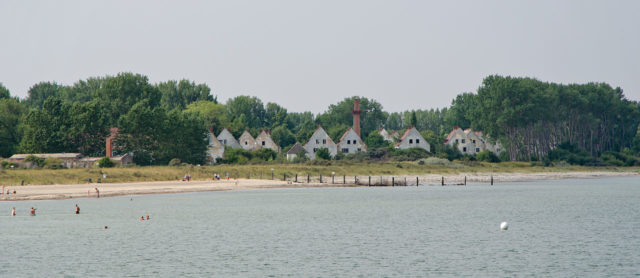
With an area of ten square kilometers (3.8 square miles), the peninsula once served as a training ground for the anti-aircraft artillery of the Reichswehr, after which it was occupied by the Red Army. However, its story begins long before that.
Wustrow was originally an island. In 1273, the first inhabitants settled there and began to engage in agricultural activities. In 1625, there was a severe storm that flooded the entire territory of Wustrow. Legend has it that the inhabitants of the island evacuated to the highest point and were still standing waist-deep in water.
The island became a peninsula when a 700-meter long spit was built, connecting the island with the mainland town of Rerik. However, in 1872 and 1874, further storms occurred in the Baltic Sea, breaching the spit and temporarily turning the peninsula back into an island until repairs were made.
Over the years, ownership of Wustrow passed through several different hands as the land was either inherited or sold. In 1925, Hans von Plessen became the owner of the site, and in 1933, he received an offer of 1.4 million marks from the German armed forces to buy this land.
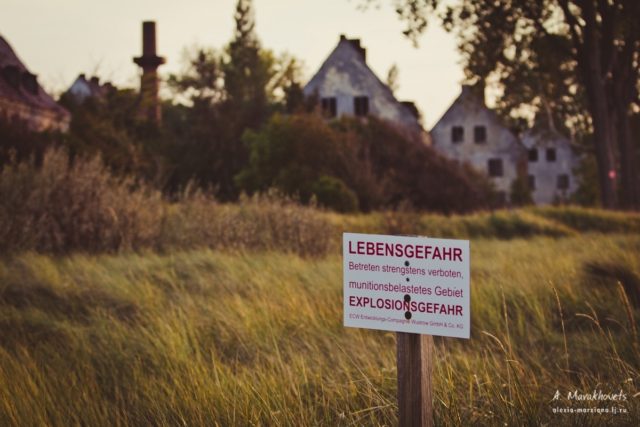
After the deal was completed, construction of the largest anti-aircraft school in Germany immediately began on the peninsula. Temporary accommodation was created so that 350 inhabitants could swiftly transfer there.
A year later, in 1934, the barracks were completed, and the administration officials had taken up residence in the former school. Eventually, the site would boast 45 barracks, residential and farm buildings, and about 20 large halls for storage and vehicles.
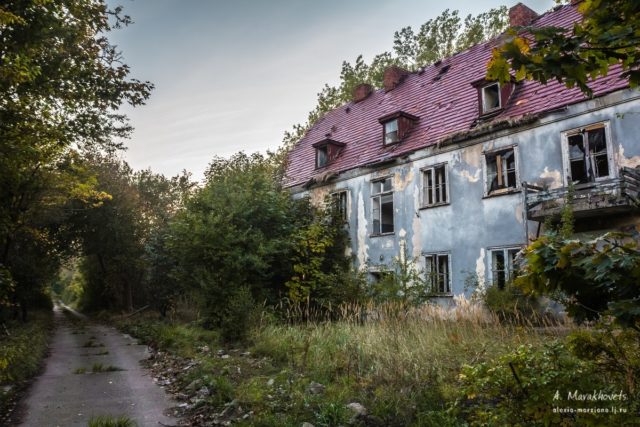
On April 6, 1934, the first military training exercises took place when the 7.5cm Flak L / 60 anti-aircraft gun was tested. Wustrow was now home to an anti-aircraft artillery school and an air force training ground. Soldiers from all over Germany would train here for several weeks.
By 1937, the peninsula consisted of 180 buildings for various purposes. A village covering 100 hectares (247 acres) was also built for the civil servants and officers who would work at the site. They had amenities such as a cinema, a swimming pool, and a bowling alley.

When the Second World War broke out, the buildings and military installations on the peninsula were expanded. Wustrow became a stopover point for those who were flying to the defense of Berlin. By now, there was an airfield, hangars for aircraft, and a hospital in the far part of the peninsula.
On May 2, 1945, Wustrow was handed over to the Soviet army, which founded its own garrison on the peninsula. Having blown up several of the German military facilities, the Soviet soldiers then proceeded to build guardhouses, barracks, warehouses, a school, a hospital, and all the other necessary buildings.
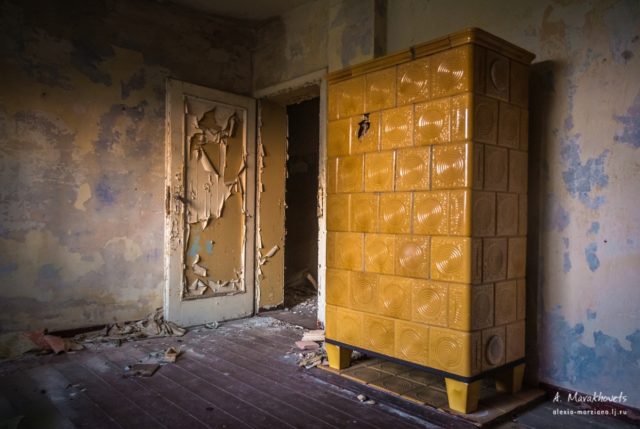
A high fence with barbed wire was installed, which even went far into the sea on either side of Wustrow. The effect was to isolate the peninsula from the outside world. All the farmers who had been on the peninsula had been resettled elsewhere. Beyond the fence, the Soviet garrison numbered over 3,000 military men and their families.
The Soviet inhabitants rarely interacted with the locals, so little is known about their time there. They had pigsties to produce their own pork, a bakery, a potato bunker, and a meat store. Schools and a cinema were built within the complex as well.
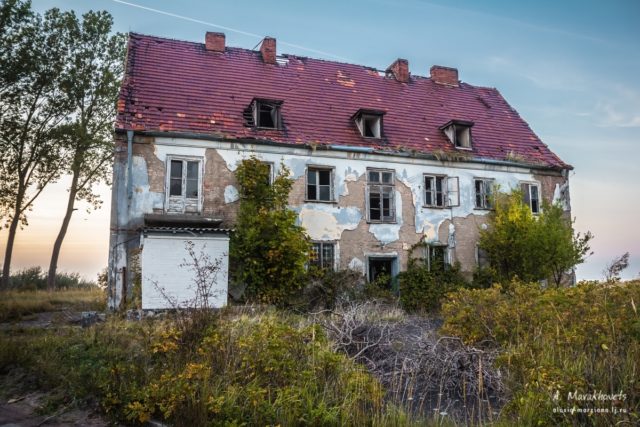
Russian soldiers were forced to leave the Wustrow Peninsula in 1993 after the collapse of the USSR. The last residents left the garrison in October 1993. They were obliged to pile their belongings into wagons, so larger items such as televisions, sofas, and tables.
The State had no purpose for the abandoned military site, and so the buildings began to fall into ruin. Previous residents who hoped to move back there were told that too much environmental damage had been done for the land to be habitable.

In 1995, the surviving buildings were included in the list of protected monuments. However, they were subsequently removed from this list in order to sell the land to the Duren-based Fundus Group company in 1998. The government was forced to spend millions of euros to clear the land of unexploded ordnance.
The Fundus Group is a luxury real estate company. The plan was to build a marina, golf courses, stables, hotels, and owner-occupied apartments to accommodate 2,000 people.
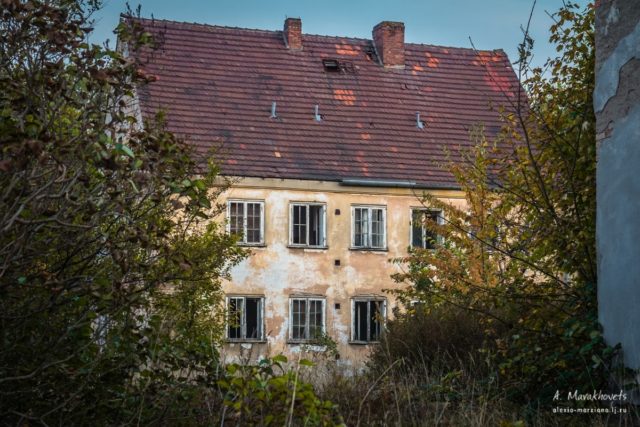
Unfortunately, as soon as the owner began to implement this plan, the residents of Rerik threw a spanner in the works. They didn’t want their quiet life disturbed by increased traffic through Rerik as the main point of access to the peninsula. As such, they banned the owners from using the access road to the peninsula.
In response, the company banned free access to the peninsula itself from September 2004. Various ideas have been put forward to address the traffic concerns, ranging from a shuttle service, speed limits, and even a tunnel. But none of these have been actioned.

Thanks to this stalemate, the buildings on the peninsula have been preserved in the form in which they were left. The south-western part has become a nature reserve. In 2011, the site was so overgrown that the federal forest authority declared the land to constitute a forest.
The peninsula is patrolled by guards, but despite this, some urban explorers manage to get into the territory. Then, from June 2018, the owner allowed tourist excursions across the island by means of a covered wagon. It was deemed too hazardous for people to explore on foot, given the poor state of the ground and the unexploded ordnance.
It is also possible to view the island from a boat on the sea.

Alexey Marakhovets is a traveler and photographer who dreams of visiting every country around the world. So far, he has visited 40 countries.
Alexey runs his own blog, which not only contains the information he collects during his trips but also showcases the impressive photos he’s taken. You should definitely check out his LiveJournal account via this link.
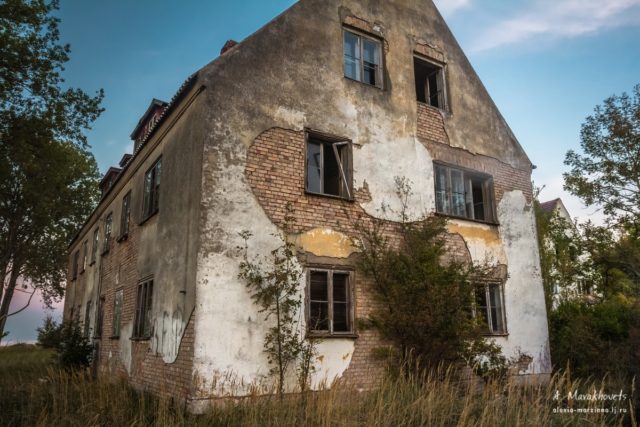
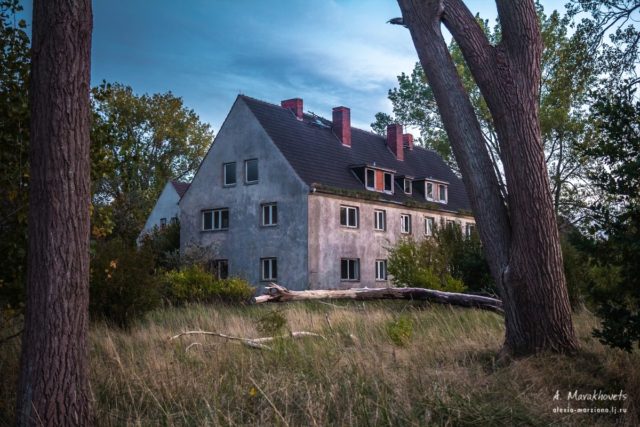
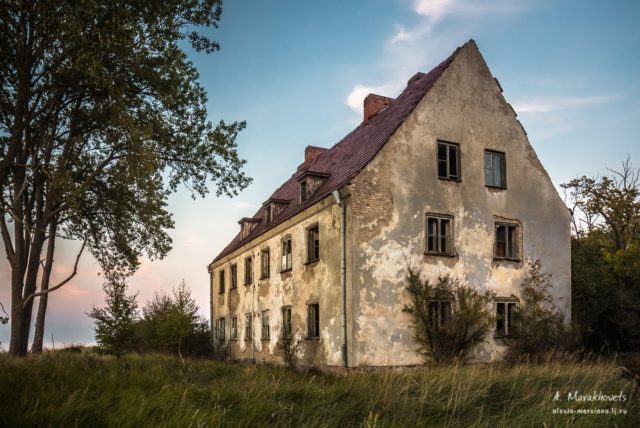
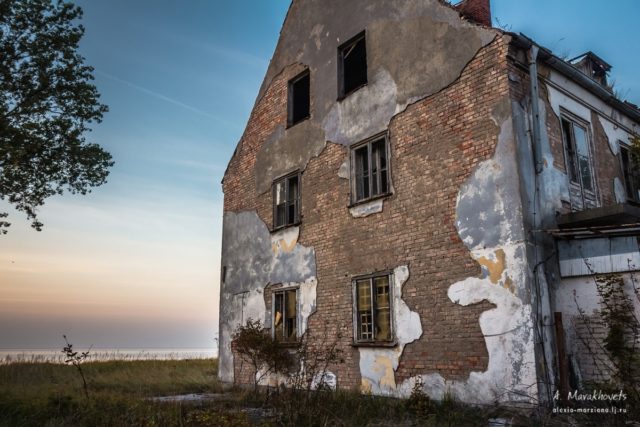
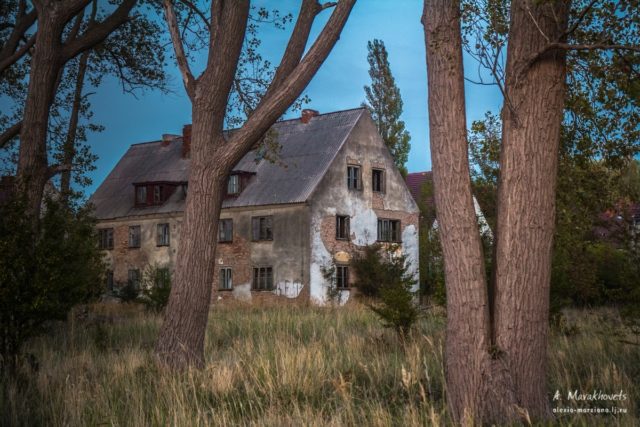
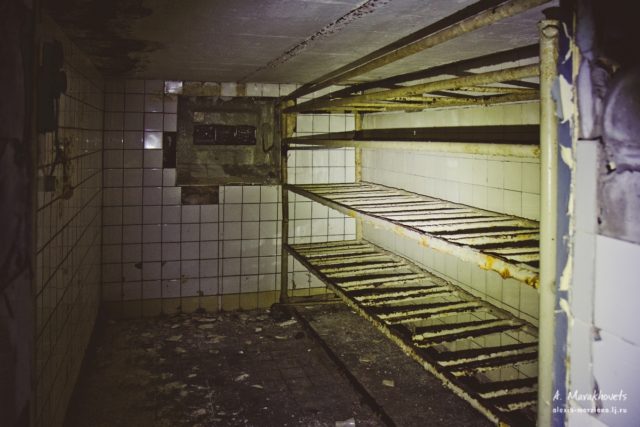
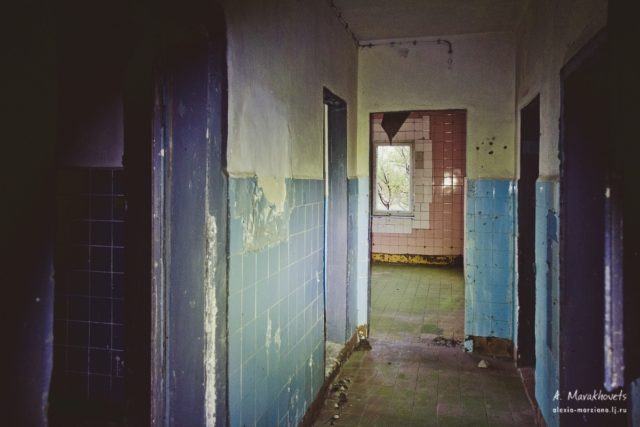
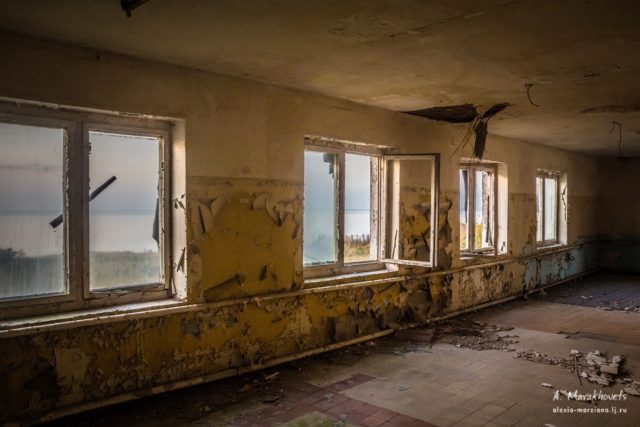
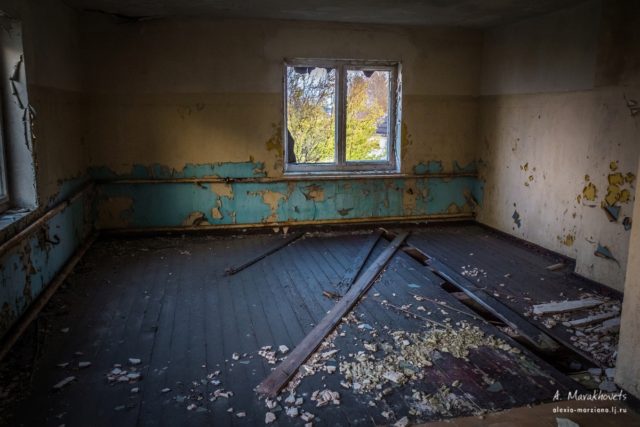
Another Article From Us: Werneuchen Airfield in Berlin
